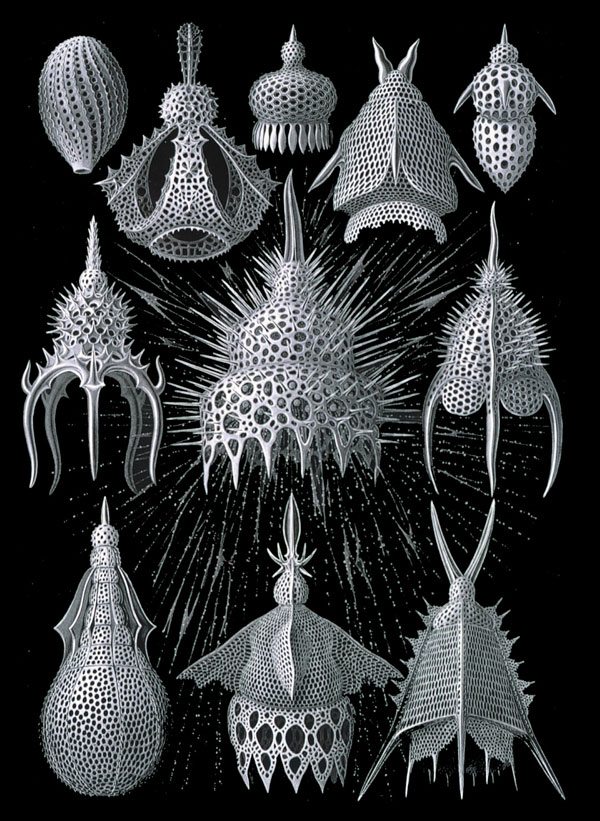On the coast of Sicily, a man sits hunched over a microscope peering at what look to be grains of sand. It's the late 1870s, and these specimens are mineral-shelled protozoans called radiolarians collected from the depths of the Marianas Trench by the HMS Challenger in science's first attempt to take a census of marine life. Only recently had Darwin put his theory of natural selection on the table, and most scientists did not believe that single-celled organisms even existed. But renowned German biologist and artist Ernst Haeckel (1834-1919) lived and breathed through his microscope, meticulously observing and sketching the silica skeletons of radiolarians and seeing in them nothing less than what he described as the "key to the creative power of nature."
Now...
 |
Image: Courtesy of Night Fire Films |
ProteusProteusProteusProteusProteusLearn more about and find information about David Lebrun's other films at its linkurl:website.;http://www.nightfirefilms.org/proteus_home.html You can purchase at the Night Fire Films linkurl:store,;http://www.nightfirefilms.net/store/store.htm or at linkurl:Amazon.;http://www.amazon.com/Proteus-Ernst-Haeckel/dp/B001B2U1B4/ref=sr_1_1?ie=UTF8&qid=1302275206&sr=8-1
Interested in reading more?
Become a Member of
Receive full access to more than 35 years of archives, as well as TS Digest, digital editions of The Scientist, feature stories, and much more!
Already a member?